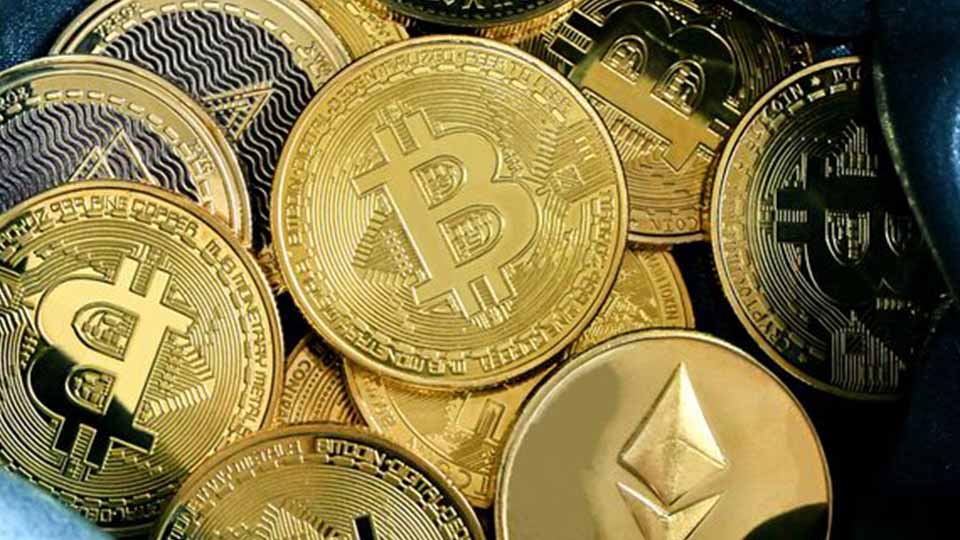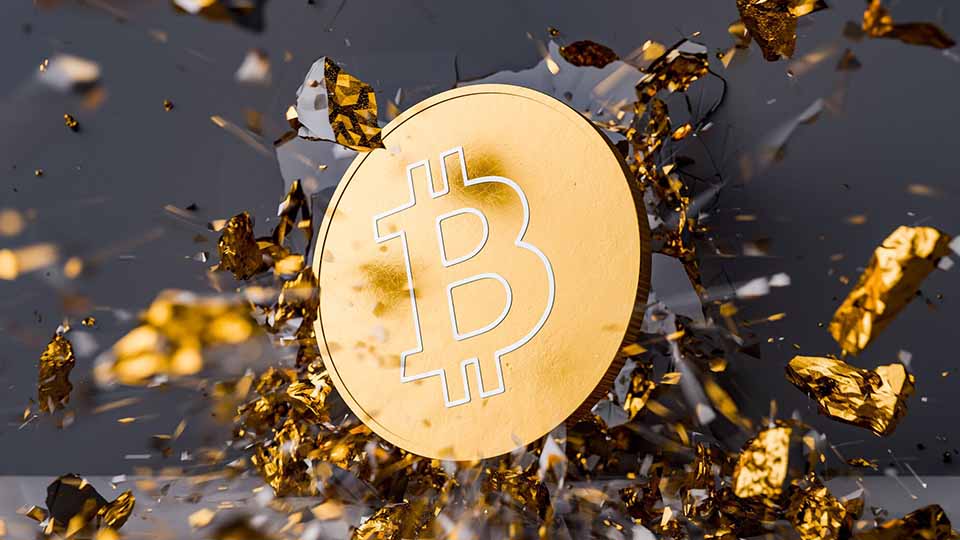Bitcoin is in a Supply Shortage
04 February 2021
The price of bitcoin has rocketed eight times since March 2020. It was $5,000 a coin then and just under $40,000 in mid-January. The big story behind the rally is that institutional investors are buying. Why? Because they worry that inflation is coming and you want an asset that can’t be debased by relentless money supply creation.
Alongside gold, that makes bitcoin a powerful inflation hedge. Only 21 million bitcoins can ever exist, as the magic equation regulating the bitcoin monetary policy (i.e. supply, see below) shows.
Bitcoin supply regulated by math

Source: Bitcoin Wiki.
The equation dictates that after 32 ‘halving periods’, all new bitcoin supply must end. Until then, supply is gradually decreasing. Every 210,000 ‘blocks’, or quotas of new issuance, the supply halves, as suggested by the term halving period. By the end of 2020, roughly 88% of all total future bitcoin had already been mined, equating to about 18.5 million bitcoin. Exacerbating the supply shortage still further, only a fraction of these are available for trading.
Lost wallets
A surprising number of bitcoin have effectively been lost, at times costing their owners millions of dollars. Owners of the private keys that give access to bitcoin have mislaid them or forgotten the passwords to their digital wallets with expensive consequences.
When an early miner dumped his hard drive in 2013, for instance, approximately 7,500 coins were lost. After the death of the CEO of Canadian crypto exchange QuadrigaCX, another few thousand coins were mislaid. Today, these lost stacks would be worth north of $200 million.
No one knows just how much bitcoin is unaccounted for, but some estimates suggest at least 3 million coins. That is 16% of today’s supply.
Satoshi’s untouched coins
The mysterious author of the bitcoin whitepaper – Satoshi Nakamoto – has also left coins locked away. As the creator of bitcoin, he was among its early miners. Indeed, estimates from the Whale Alert, the leading tracker of cryptocurrency transactions, estimate that Satoshi “mined coins up to block 54,316, capturing 1,125,150 BTC"1.
Satoshi’s last post on bitcointalk.org

Source: bitcointalk.org on 12 December 2010.
When Satoshi finally logged off of bitcointalk.org on 12 December 2010 and disappeared, he left his originally mined bitcoins untouched. They remain so, shaving another 6% off bitcoin’s circulating supply.
Die-hard HODLers
The so-called HODLers (from “hold”, or “hodl” – “hold on for dear life”) are the die-hard fans of bitcoin. They could be compared to the cult-like followers of Elon Musk, founder of electric car manufacturer Tesla. HODlers “stay invested in bitcoin and do not capitulate in the face of plunging prices”2. They also do not sell when bitcoin reaches new all-time highs, as has happened during the last few weeks.
Many bitcoin users are using exchange wallets (so called custodial wallets) to store their bitcoin. These accumulators cannot be identified when they are using omnibus exchange wallets. But once they withdraw bitcoins to their own public keys, they can be categorized and observed. The blockchain data and intelligence provider, Glassnode, categorizes these addresses as ‘accumulation addresses’ – private keys that have received bitcoin in the past but have never sold them.
Bitcoin: Total Balance in Accumulation Addresses
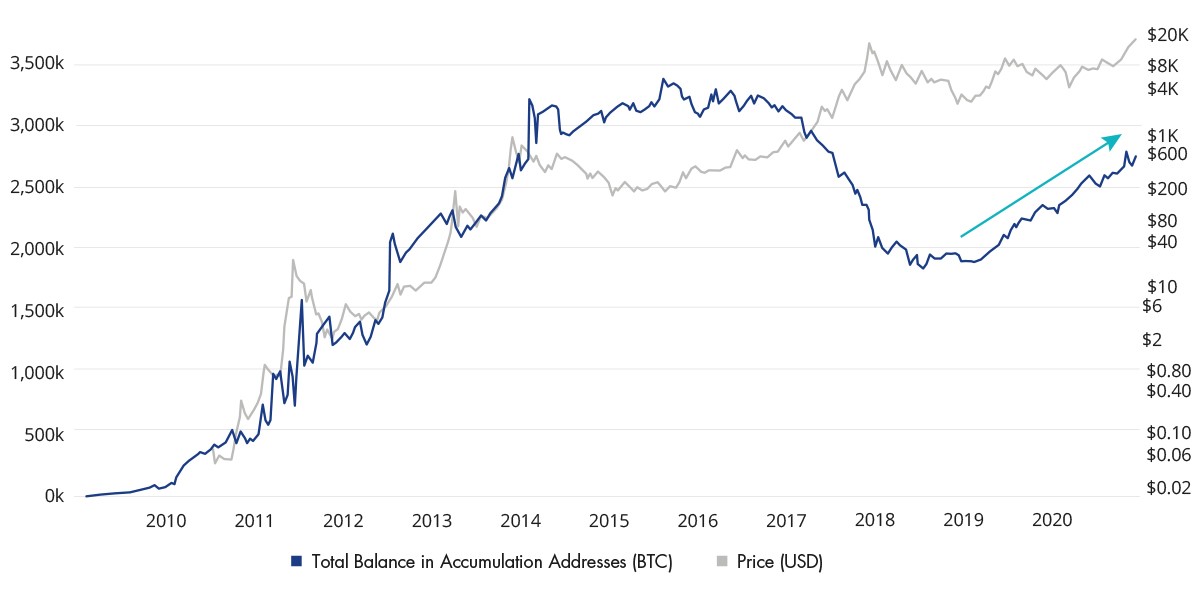
Source: Glassnode.com.
According to Glassnode, 2.7 million coins are held in these ‘accumulation addresses’, representing more than 14% of supply.
New age treasuries
Joining the long-term holders of bitcoin are several corporate treasuries. One of today’s most discussed bitcoin topics is the July 2020 decision by US business intelligence company Microstrategy, Inc to invest its entire $500m treasury balance. The company, led by CEO Michael Saylor, followed up with a $650m convertible notes offering solely for buying bitcoin3. As of 21 December 2020, the company held 70,470 bitcoins, or 0.38% of total circulating supply4. Saylor also announced that he personally had accumulated 17,732 BTC5.
While Microstrategy might be the most vocal corporate advocate of bitcoin as a treasury asset, others are similarly invested. One of the first companies to follow was Jack Dorsey’s (Twitter CEO) payments company Square, Inc., investing roughly $50m to buy 4,709 BTC.
Companies holding bitcoin as a balance sheet asset
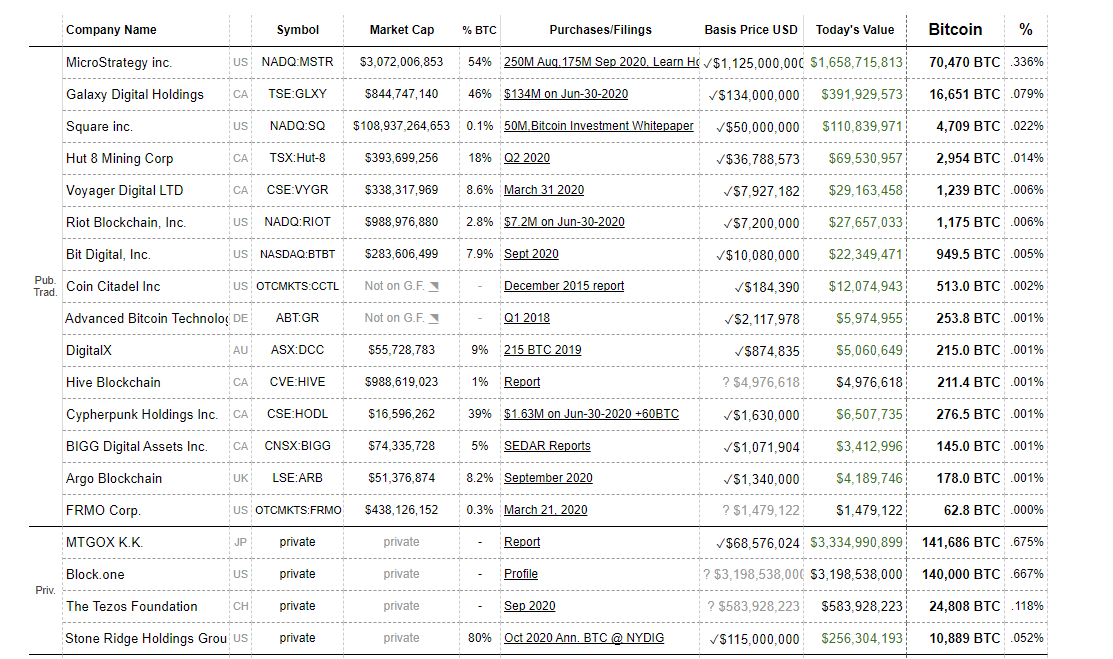
Source: Bitcoin Treasuries, on 23 December 2020.
Many other publicly-listed and private companies – some originally involved in the digital assets ecosystem – had balance sheet exposure to bitcoin long before Microstrategy announced its purchases.
Investors join in
Locking up still more bitcoin is its growing acceptance among institutional investors. More and more vehicles exist to give institutional investors access to this emerging asset class. In the US, a prominent investment trust has gathered around 775,000 coins, about 4% of the total circulating supply. In Europe, various ETP issuers (VanEck among them) have listed ETPs on regulated exchanges, including Deutsche Börse Xetra, SIX Swiss Exchange and NASDAQ Stockholm. They enable easy and regulated access. While these vehicles have not nearly as many bitcoin in custody as the US investment trust, the pace of bitcoin adoption is accelerating.
Number of Shares Outstanding for European Bitcoin ETPs
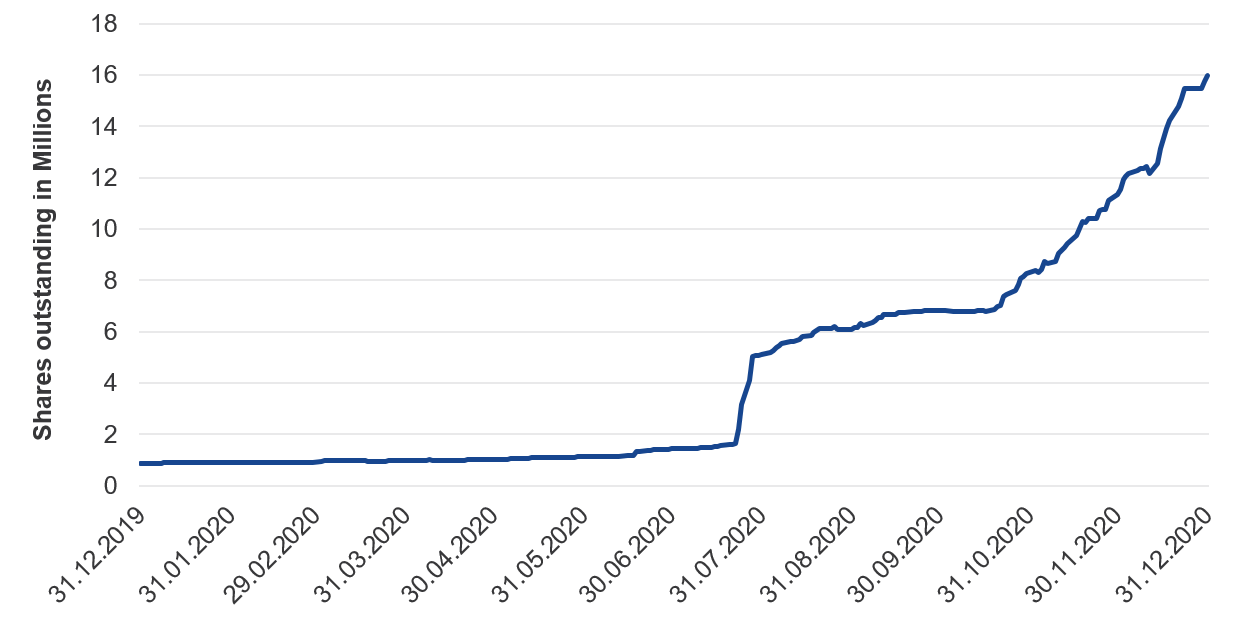
Source: VanEck, as of 31 December 2020.
What all of this suggests is that bitcoin’s supply shortage is greater than observers realize, and matters more than ever. Just as corporate and investor interest is growing, so supply is being squeezed. Many outcomes are unpredictable and in flux at a time when central banks are inflating the money supply and many asset classes. But one thing is constant: the very limited supply that underpins bitcoin’s value.
Learn more about Investing in Bitcoin
1Source: Bitcoin.com: New Satoshi Stash Estimate Claims Creator Mined $10.5B Worth of Bitcoin.
3Source: Microstrategy.
4Source: Microstrategy.
5Source: Twitter.
Important Disclosure
For informational and advertising purposes only.
This article originates from VanEck (Europe) GmbH, Germany. It is intended only to provide general and preliminary information to investors and shall not be construed as investment, legal or tax advice. VanEck (Europe) GmbH and its associated and affiliated companies (together “VanEck”) assume no liability with regards to any investment, divestment or retention decision taken by the investor on the basis of this article. The article and opinions expressed are current as of the article’s posting date and are subject to change with market conditions. Certain statements contained herein may constitute projections, forecasts and other forward looking statements, which do not reflect actual results. VanEck makes no representation or warranty, express or implied regarding the advisability of investing in securities or digital assets.
Investing is subject to risk, including the possible loss of principal up to total loss.
No part of this material may be reproduced in any form, or referred to in any other publication, without express written permission of VanEck.
© VanEck (Europe) GmbH.
Important Disclosure
This is a marketing communication. Please refer to the prospectus of the UCITS and to the KID before making any final investment decisions.
This information originates from VanEck (Europe) GmbH, which has been appointed as distributor of VanEck products in Europe by the Management Company VanEck Asset Management B.V., incorporated under Dutch law and registered with the Dutch Authority for the Financial Markets (AFM). VanEck (Europe) GmbH with registered address at Kreuznacher Str. 30, 60486 Frankfurt, Germany, is a financial services provider regulated by the Federal Financial Supervisory Authority in Germany (BaFin).
The information is intended only to provide general and preliminary information to investors and shall not be construed as investment, legal or tax advice VanEck (Europe) GmbH, VanEck Switzerland AG, VanEck Securities UK Limited and their associated and affiliated companies (together “VanEck”) assume no liability with regards to any investment, divestment or retention decision taken by the investor on the basis of this information. The views and opinions expressed are those of the author(s) but not necessarily those of VanEck. Opinions are current as of the publication date and are subject to change with market conditions. Certain statements contained herein may constitute projections, forecasts and other forward-looking statements, which do not reflect actual results. Information provided by third party sources is believed to be reliable and have not been independently verified for accuracy or completeness and cannot be guaranteed. Brokerage or transaction fees may apply.
All performance information is based on historical data and does not predict future returns. Investing is subject to risk, including the possible loss of principal.
No part of this material may be reproduced in any form, or referred to in any other publication, without express written permission of VanEck.
© VanEck (Europe) GmbH / VanEck Asset Management B.V.
Sign-up for our ETF newsletter
Related Insights
16 January 2025
27 November 2024
27 November 2024
07 November 2024

